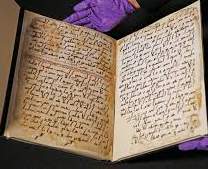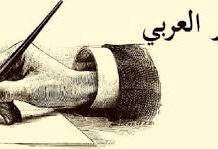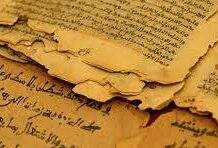The Sources of Arabic Language and Literature
The Sources of Arabic Language and Literature
The Sources of Arabic Language and Literature
Arabic is one of the oldest and most respected languages in the world. This language belongs to the Semitic language family and it originated in the 8th century BC. It is important to note that no written literature has been found in this language since its inception until the 5th century AD. However, it is estimated that the use of scripts in this language began several centuries before Christ and that some written literature was also created. But it is unfortunate that no specimens of pre-Islamic Arabic written literature have been found. However, there is no shortage of curiosity in the mind of scholars to know the history of such an influential language as Arabic. This is why they have unearthed some inscriptions and tablets from the pages of history and from them, they have come to some conclusions about the ancient Arabic language and literature. It should be noted that there is no shortage of sources of Arabic language and literature since the Islamic era i.e. 622 AD. This is because the tradition of regularly writing literature in Arabia began in the Islamic era. Inscriptions and clay tablets are the main sources of information about the ancient Arabic language and literature.
First, the efforts of archaeologists have led to the discovery of many ancient slates in various parts of Arabia. For example, some inscriptions have been found north of the Arabian Hijaz province. These scripts are very similar to the Shabai script. It is estimated that these were written around 500 BC. It is also known as the ‘Thamud script’ because it is found mainly in the area inhabited by the ancient Thamud people.
Second, some inscriptions have been found on the site of an ancient tomb at Namara, now near Damascus. These are believed to have been written in 327 AD.
Third, some inscriptions and clay tablets written in Arabic, Syriac, and Greek have been discovered at a place called Jabad in Aleppo. There is evidence that these were written in 512 AD.
Fourth, Arabic and Greek bilingual inscriptions dating to 58 AD have been recovered from a place called Arabar Harran. These inscriptions are said to be more ancient than Southern Arabic and Northern Arabic.
Similarly, some ancient earthen plates have been discovered elsewhere. These inscriptions and tablets are the main sources of the Arabic language and literature of ancient times. By studying these, one can know a lot about the birth and evolution of the Arabic language and literature.
The second level of knowledge about the Arabic language and literature is considered to be the literature of the pre-Islamic period. During the pre-Islamic period, from 500 AD to 622 AD, more than 200 poets, orators, etc. were born in Arabia and they gave birth to a large number of poems and prose in Arabic. However, it is unfortunate that many of them were composed orally and some of them were preserved for posterity by relying on memorization. However, in the Islamic era, the influence of poetry in Arabia waned and the works of the pre-Islamic era gradually began to fade from human memory. But the formal tradition of reading and writing in Arabia dates back to the late 7th and early 8th centuries, and on that occasion, some lovers of literature collected and preserved some of the lost pre-Islamic poems from the mouth of the folk. Some of the notable collections are- The Muallaqa, The Mufaddaliyat, Abu Diwanul Hamasa of Abu Tammam, The Hamasa of Buhturi, Ambaril Arab, Kitabul Aghani, etc.
These collections are the main sources of the Arabic language and literature of the pre-Islamic era. By studying these materials one can get a clear idea about the development of the Arabic language and literature. It is important to note that the literature of the pre-Islamic period, especially poetry, gave a clear and definite structure to the Arabic language and scripts and established Arabic as a distinct language.
After this, in the Islamic era, Koran and Hadith texts gave stability and universality to the Arabic language and literature. 0 0 0.
The Sources of Arabic Language and Literature
Read More: A Brief History of Arabic Literature: Early Islamic Period (622 AD-661 AD)
The Sources of Arabic Language and Literature
N.B. This article ‘The Sources of Arabic Language and Literature’ originally belongs to the book entitled ‘A Brief History of Arabic Literature: Pre-Islamic Period (500 AD-622 AD) by Menonim Menonimus. The Sources of Arabic Language and Literature,
The Sources of Arabic Language and Literature
Related Searches:
- Reference Sources of Arabic
- Arabic Language and Literature
- The Characteristics of Arabic Language
- The History of Arabic Language
- Arabic Language
- A Very Brief History of Arabic Language
Books of Literary Criticism by M. Menonimus:
- World Short Story Criticism
- World Poetry Criticism
- World Drama Criticism
- World Novel Criticism
- World Essay Criticism
- Indian English Poetry Criticism
- Indian English Poets and Poetry Chief Features
- Emily Dickinson’s Poetry-A Thematic Study
- Walt Whitman’s Poetry-A Thematic Study
- Critical Essays on English Poetry
- Tawfiq al-Hakim’s Novel: Return of the Spirit-An Analytical Study
- Tawfiq al-Hakim’s Novel: ‘Yawmiyyat Naib Fil Arayaf’-An Analytical Study
- Analytical Studies of Some Arabic Short Stories
- A Brief History of Arabic Literature: Pre-Islamic Period (500 AD-622 AD)
- A Brief History of Arabic Literature: Early Islamic Period (622 AD-661 AD)











